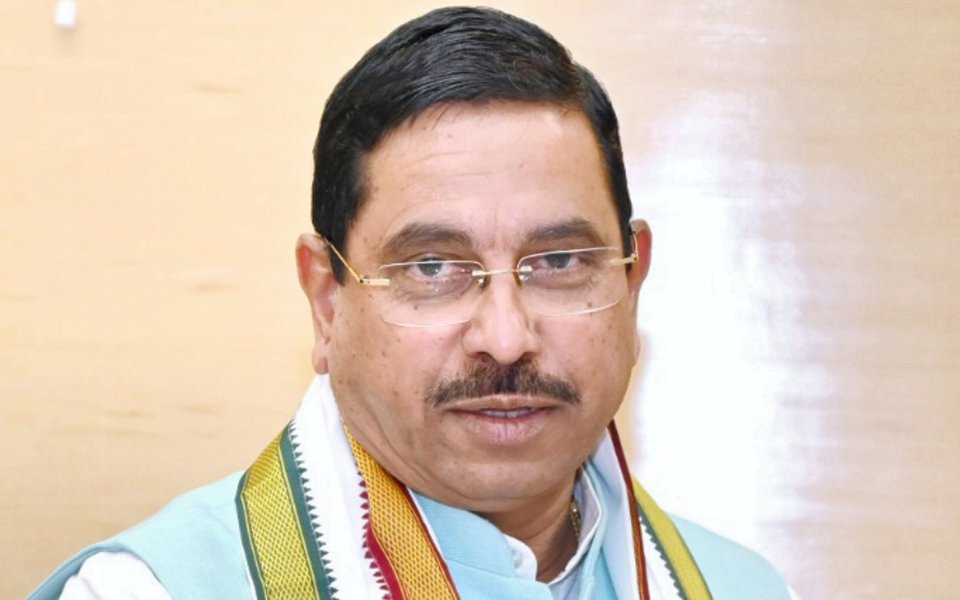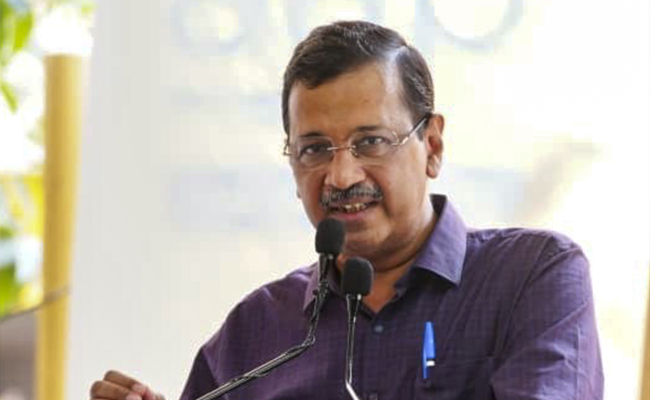Mangaluru (Karnataka) Jan 2: Union Minister for Renewable Energy Pralhad Joshi urged people on Thursday not to be dependent on the governments for freebies, but to produce their own solar power.
Joshi attended a consultative meeting with the consumers, electricity supply company (ESCOM) officials, and people's representatives to discuss Surya Ghar Muft Bijli Yojana here on Thursday.
"I will not comment on what the motives were behind the distribution of free power generated using environmentally harmful core sector material. But sustainability in the power sector is going to be the key to a safer future for the country," said Joshi, who is also the Union Minister of Consumer Affairs, Food and Public Distribution.
According to Joshi, Surya Ghar Muft Bijli Yojana launched by Prime Minister Narendra Modi on February 15, 2024 aims to provide free electricity to households in India by providing a subsidy to install solar panels on their roofs. The subsidy will cover up to 40 percent of the cost of the solar panels.
He said with the free schemes involving non-renewable sources, somebody still has to pay a price.
"In this bargain, so many short cuts will have to be taken by the implementation bodies in the form of cutting production costs, thereby becoming unproductive and ending up sick," said Joshi.
Recalling the time he was a coal minister, Joshi said the cost being paid is enormous for what is being distributed as "free".
"I remember the statistics: 2.5 lakh tonnes of coal were being mined at enormous cost and environmental degradation, transported to the thermal power producers, and the process of producing thermal power involved a very high cost," he added.
Joshi also said the other renewable energy sources the government was looking at for development in the future, tidal, wind, and geothermal power are on the anvil.
"Research and product development are underway in these forms of energy.
The solar power management is also undergoing ground breaking research and product development, which will extend the life of solar power units from 25 years to 40 years. Their installed capacity will also increase, and the cost is going to be rationalised depending on the demand," added Joshi.
He said there is scientific data available that by 2050, the heat on earth is going to reach 'critical' levels.
"If we do not buckle up and use fewer heat-generating power modules, we may reach there even by 2030," Joshi pointed out.
He also pointed to Rajasthan and Gujarat, which experienced temperatures rising up to 50 degrees Celsius in 2024, as examples.
"If the temperature retains its upward tendencies, it is projected that the GDP will come down by 19 percent as a result of manpower loss due to fatigue and health issues of the human resource," said Joshi.
According to him, India has already achieved 93.5 gigawatts of solar power from 2.3 GW, 10 years ago.
"The country has solar modules that have an installed capacity of producing 60GW. With 300 days of sunny days, a family of five people can comfortably use solar power for all their electrical gadgets," Joshi added.
Brijesh Chowta MP of Dakshina Kannada also spoke on the occasion.
Let the Truth be known. If you read VB and like VB, please be a VB Supporter and Help us deliver the Truth to one and all.
Panaji (PTI): As part of a crackdown against tourist establishments violating laws and safety norms in the aftermath of the Arpora fire tragedy, Goa authorities on Saturday sealed a renowned club at Vagator and revoked the fire department NOC of another club.
Cafe CO2 Goa, located on a cliff overlooking the Arabian Sea at Vagator beach in North Goa, was sealed. The move came two days after Goya Club, also in Vagator, was shut down for alleged violations of rules.
Elsewhere, campaigning for local body polls, AAP leader Arvind Kejriwal said the fire incident at Birch by Romeo Lane nightclub at Arpora, which claimed 25 lives on December 6, happened because the BJP government in the state was corrupt.
An inspection of Cafe CO2 Goa by a state government-appointed team revealed that the establishment, with a seating capacity of 250, did not possess a no-objection certificate (NOC) of the Fire and Emergency Services Department. The club, which sits atop Ozrant Cliff, also did not have structural stability, the team found.
The Fire and Emergency Services on Saturday also revoked the NOC issued to Diaz Pool Club and Bar at Anjuna as the fire extinguishers installed in the establishment were found to be inadequate, said divisional fire officer Shripad Gawas.
A notice was issued to Nitin Wadhwa, the partner of the club, he said in the order.
Campaigning at Chimbel village near Panaji in support of his party's Zilla Panchayat election candidate, Aam Aadmi Party leader Kejriwal said the nightclub fire at Arpora happened because of the "corruption of the Pramod Sawant-led state government."
"Why this fire incident happened? I read in the newspapers that the nightclub had no occupancy certificate, no building licence, no excise licence, no construction licence or trade licence. The entire club was illegal but still it was going on," he said.
"How could it go on? Couldn't Pramod Sawant or anyone else see it? I was told that hafta (bribe) was being paid," the former Delhi chief minister said.
A person can not work without bribing officials in the coastal state, Kejriwal said, alleging that officers, MLAs and even ministers are accepting bribes.





